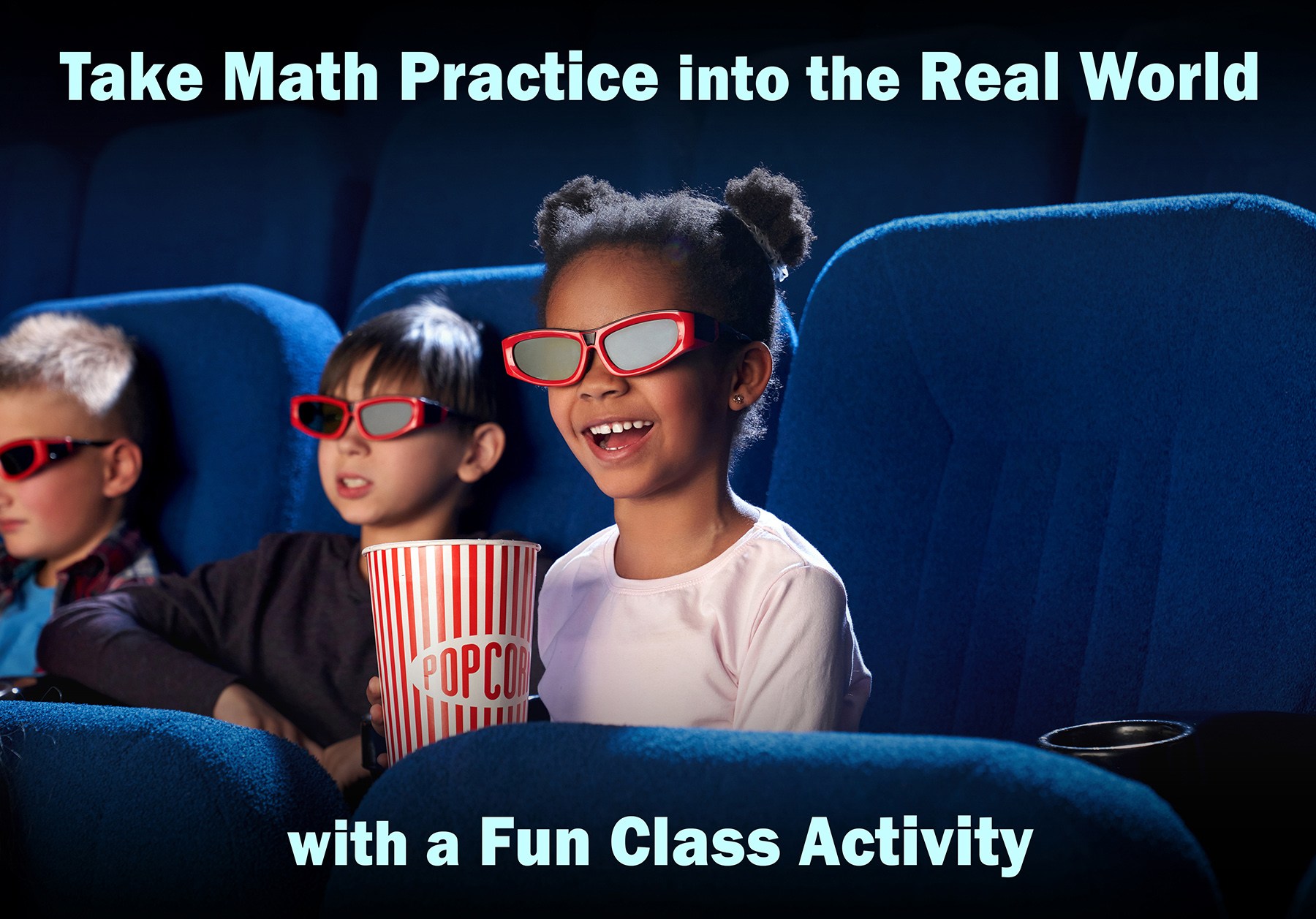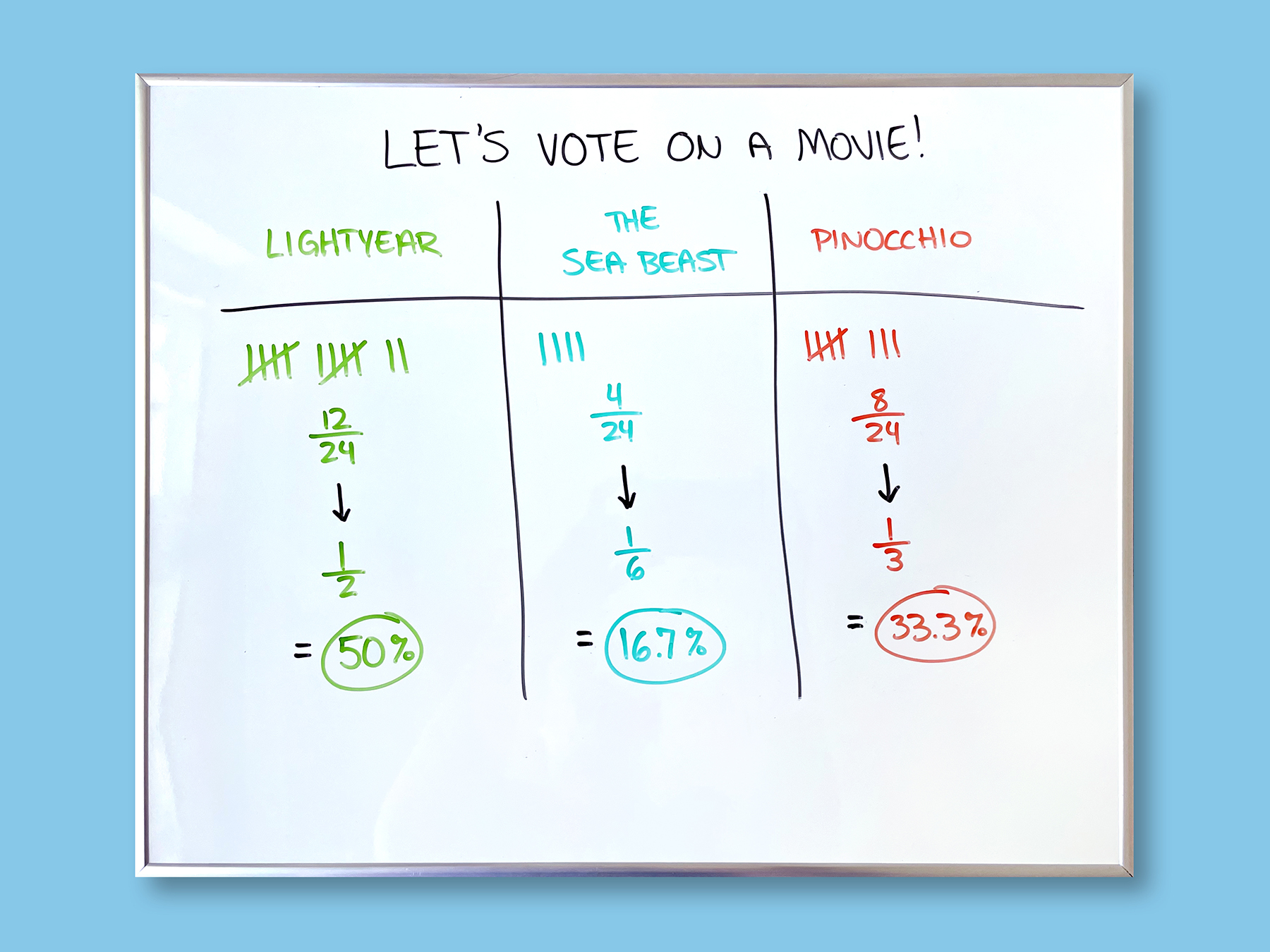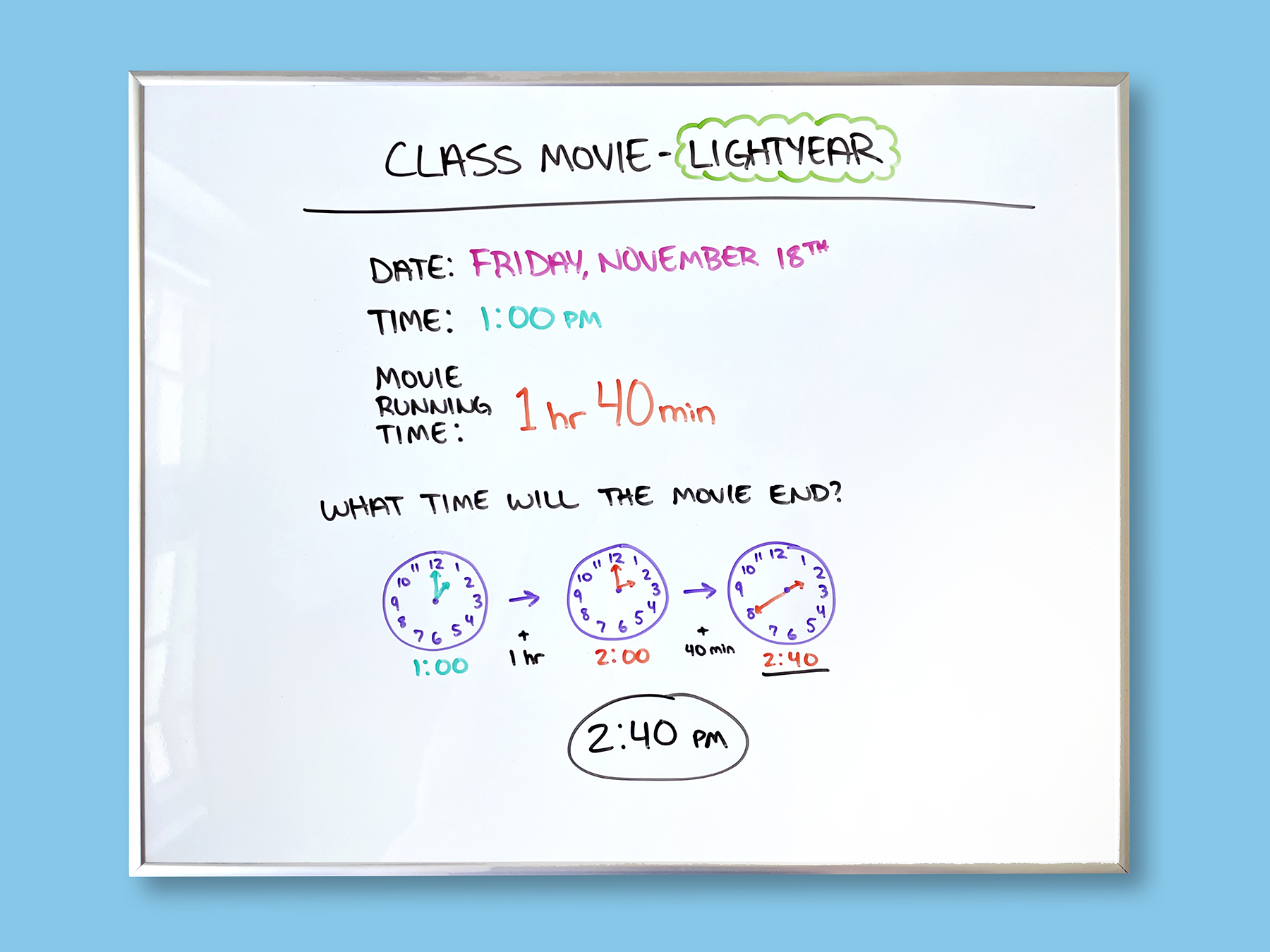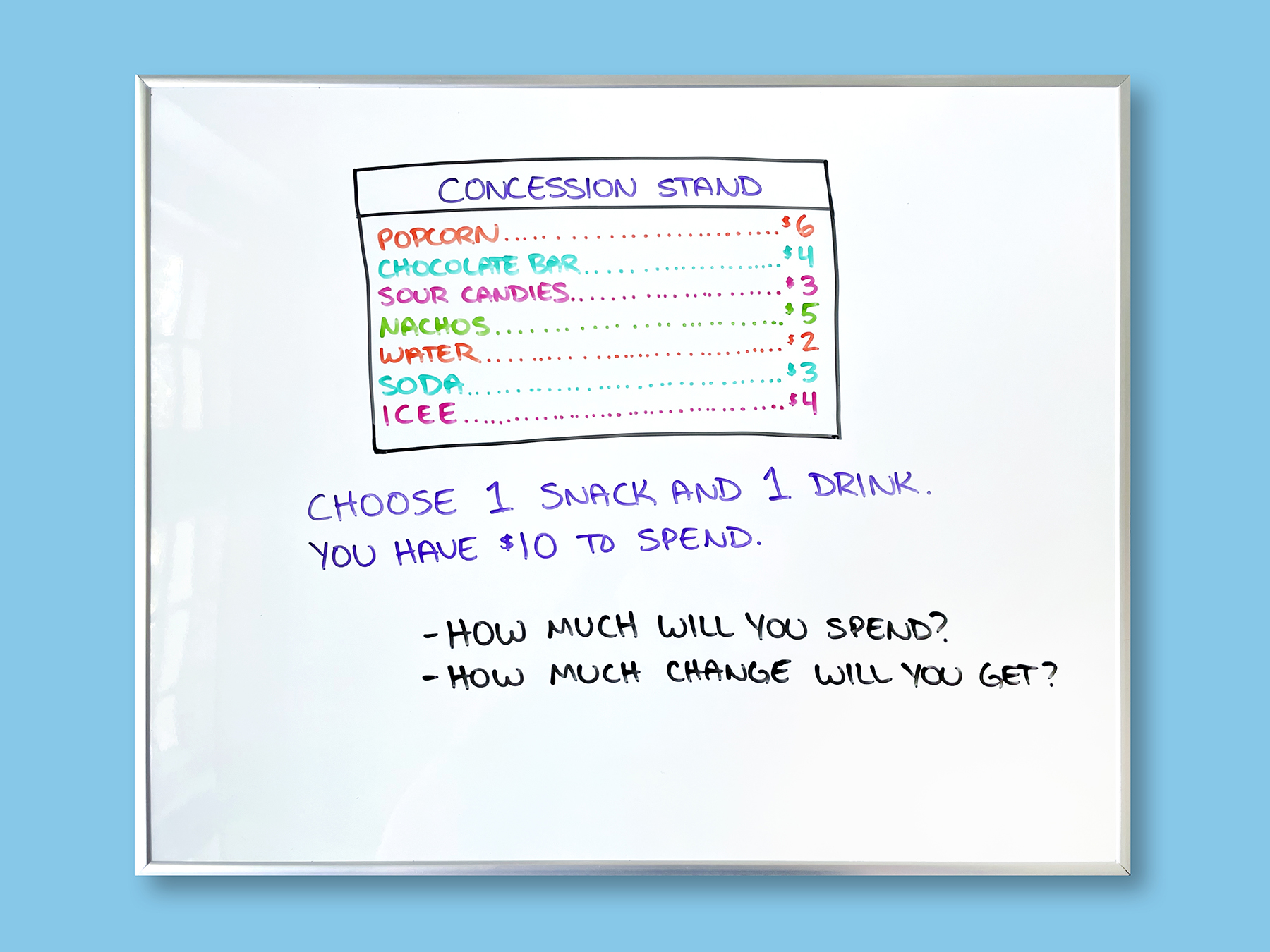
Give your students real-world math skills practice with a fun activity featured in our November blog post. Children will practice counting money, telling time, and calculating percents and fractions of the whole as they plan an outing to the movies. Read on to find out more!
In this guided class activity, students will plan an outing to the movies using foundational math skills. You may want to use this math activity alongside a classroom movie-watching party before a long weekend or a holiday break. Here’s how to do this guided activity with your class:

First, your class will choose a movie for their real or imagined afternoon at the movies. If you plan to show a movie in class, provide a selection of children’s movies from which children can choose. Otherwise, you may want to showcase children’s movies that are currently playing in the theaters. Either way, students will vote on the movie they’d like to see. Use your whiteboard or overhead projector to tally the number of votes for each movie. Also make a note of the total number of students present in class for the activity.
Write each category of votes as a fraction with the number of student votes per movie in the numerator and the total number of students in the denominator.
Example:
Lightyear – 12/24
The Sea Beast – 4/24
Pinocchio – 8/24
Ask students to reduce the fractions to simplest form if possible. Rewrite each simplified fraction:
Lightyear – 1/2
The Sea Beast – 1/6
Pinocchio – 1/3
Next, ask students to convert each fraction to a percent of the whole:
Lightyear – 50%
The Sea Beast – 16.7%
Pinocchio – 33.3%
Decide together which movie received the highest number of votes.

Now that your class has picked a movie, it’s time to figure out when to see it. If you’re doing a classroom movie-watching party, you will already have a date and time planned into your classroom schedule. If you’re planning an imaginary scenario, choose a date and look up showtimes.
For a classroom movie party, announce the date and time of the movie to your students. Look up the total running time of the film and record it on your whiteboard or overhead projector. Ask students to calculate the approximate end time of the movie when you give them a start time. Use a number line or other visual aid as needed. Do the same for an imagined outing to the movie theater.
You may also want your students to convert the total length of the film to hours and minutes if you give them the running time in minutes, or vice versa.
If there will be an intermission or break for lunch or other classroom activities, be sure students account for it when they calculate the approximate end time of the movie.

What’s a trip to the movies without snacks? Of course, if you’re having a classroom movie party, you will probably have snacks on hand for your little movie-goers, but you can still ask them to imagine a “concession stand” scenario beforehand. That’s where money skills come in!
List out prices of common concession stand snacks and drinks on your overhead projector or whiteboard. (Feel free to look up current prices at your local theater.) Students will each have an imaginary $10 to spend at the concession stand.
Ask students to choose one snack and one drink. Students will each add the cost of the items together. Then, they will subtract the total cost of their items from the $10 they started with to figure out the change. Check their work once they have finished the two-step math problem.
Now that your students have had a chance to put their math skills to the test by planning a day at the movies, it’s time to sit back, relax, and enjoy the show!
Looking for more fun, educational math activities for your class? Browse the Super Teacher Worksheets Math Collection for tons of printable math resources you and your students will love.
You may also like: